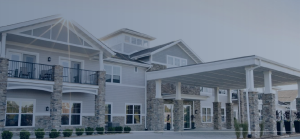Despite increasing expenses squeezing operator margins and investment returns, even more reasons exist to be optimistic about senior living’s outlook, according to a new report on emerging real estate trends.
The 44th edition of the trend report from the Urban Land Institute and PwC US documents a growing interest by investors in senior housing, due to its strong demographic tailwinds and its proven ability to outperform other sectors during volatile market conditions.
But other factors are causing senior living to capture investors’ attention, including its new value proposition as the proverbial “fountain of youth” for prospective residents seeking a high quality of life, wellness, longevity and a sense of purpose.
The trend of operators incorporating wellness programs into their offerings, according to the authors, can provide a “significant competitive advantage” as prospective residents seek out intellectual, physical, social, spiritual, vocational, emotional and environmental wellness programming.
For better or worse — and from the perspective of this report, it’s for the better — senior housing also is being recognized as part of the healthcare continuum.
“Simply stated, senior housing operators influence social determinants of health for hundreds of thousands of older Americans” as operators help residents manage their chronic illnesses, the report reads. “Properly managed, this can result in fewer resident hospitalizations, reduce federal and state-level healthcare spending, and act as a catalyst for future business opportunities and collaborations.”
The authors maintained that once senior living is fully recognized as part of the healthcare continuum, operators will enjoy the revenue streams associated with a capitation, risk-sharing model of care.
The sector’s gradual occupancy recovery is being boosted by a recent slowdown in inventory growth — construction starts on senior living units in the second quarter were the lowest since 2015 — and strong post-pandemic demand patterns as the growing population of older adults creates a “captive pool” of potential new residents, the authors noted, citing statistics from a previous National Investment Center for Seniors Housing & Care NIC MAP Vision report.
Challenges lie ahead
But the sector is not without its challenges, they wrote.
The economy, inflation and increasing interest rates are issues facing operators, along with rising expenses associated with labor shortages, insurance, food, energy and other goods and services.
Staff recruitment and retention also has been exacerbated by the pandemic and could constrain growth, the authors said. Tight labor market conditions are pressuring wage rate increases, especially for workers in assisted living and skilled nursing. And rent hikes have not been able to offset those expense pressures for many operators, according to the report.
“Collectively, these are squeezing operator margins, investment returns and debt issuance,” the report reads.
Industry presses forward
One way the industry is responding is by segmenting the market, both by price point and service offerings, the authors said.
Active adult communities, middle market communities and “ultra-luxury retirement communities” are joining the traditional senior living product, offering a value proposition of security, socialization, engagement, room and board, cre coordination and lifestyle, according to the report.
“The increasing segmentation and differentiation of senior housing in serving the vast number of seniors in the middle-income cohort will add a large demand pool for operators to serve, as will the movement of ‘younger old’ adults into the active adult segment,” the report reads.
Looking ahead, the authors found several reasons to be optimistic about senior housing’s outlook, which “remains in place and ultimately should win the day by attracting new residents to senior housing properties.”
The report includes data and insights from more than 2,000 real estate industry experts. Topics addressed include shifts in the property sector since the pandemic, changing investor sentiment toward climate risks, the emergence of impact investing and other issues within the real estate markets in the United States and Canada.








